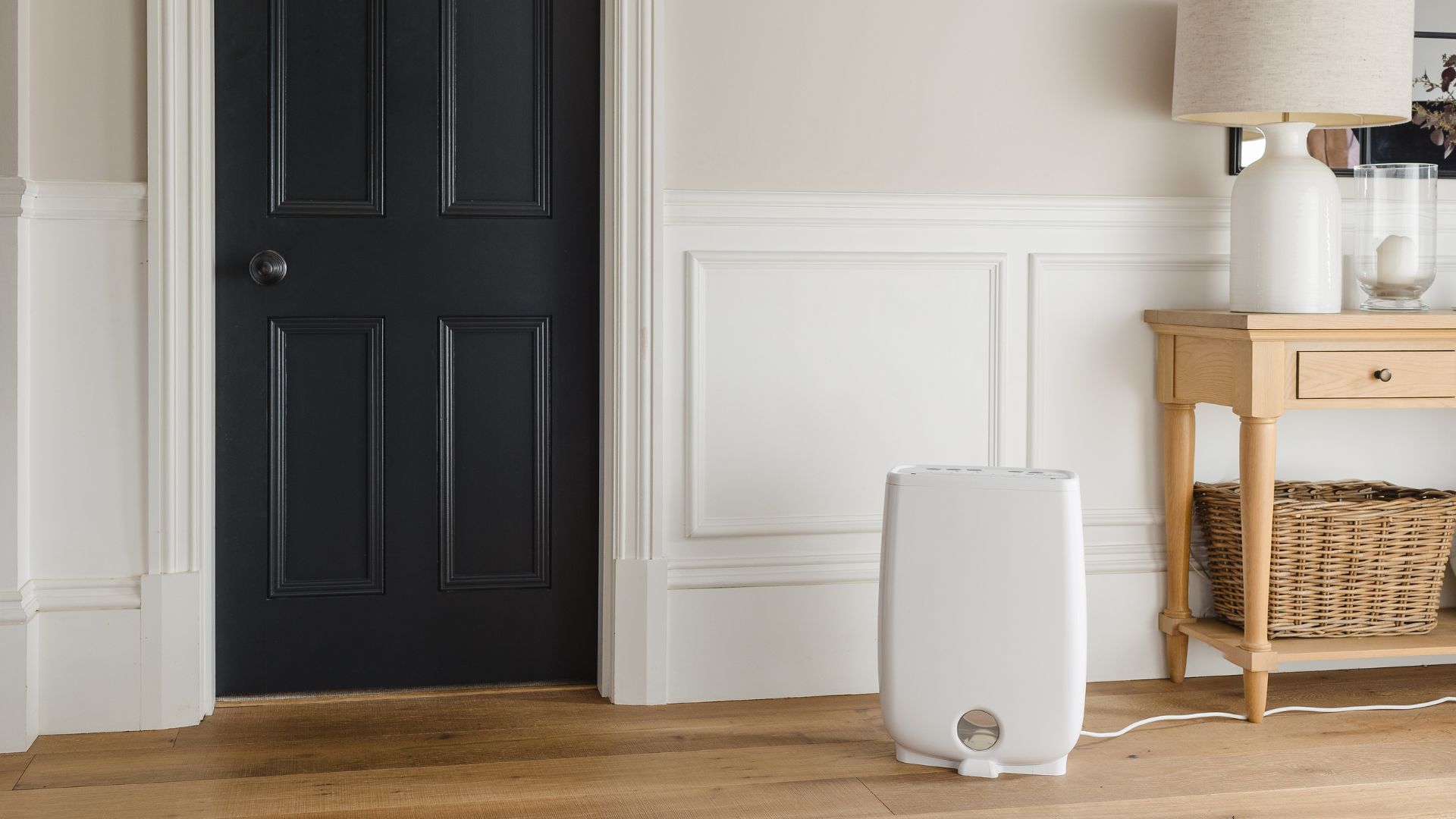
As the weather grows colder, we often find ourselves cranking up the heat and blocking out chilly drafts coming in. But while we’re winterizing our homes to make it more cozy, this can cause condensation or dampness in areas. And if you don’t own one of the best dehumidifiers to eliminate humidity, you’ll need to know how to dry out a room.
Not only can such conditions encourage mold in your home , but if left untreated, mold and mildew can seriously affect your health if spores are inhaled. In addition, there might be some areas where a dehumidifier just isn't suitable long-term, such as a bathroom or a small closet space. Luckily, there are some clever ways you can dry out a room without a dehumidifier.
What’s more, these simple things are a quick and budget-friendly solution to preventing dampness and keeping moisture levels down. So, whether it’s increasing ventilation to using a popular household ingredient, here are some useful tips to dry out a room. 1.
Leave a window open Although it might be chilly outside, it's important to allow proper air circulation. Blocking air vents and window insulation can all work well to prevent the heat escaping, but this can also block essential ventilation needed to prevent condensation building up. “It’s super important to ventilate your home twice per day by opening all windows in a home for 5-10 minutes," states Sergey Nikolin, President at Product Air Heating & Cooling LLC , “Poor ventilation is the main culprit of high humidity in a home.
If opening windows is not an option, keep interior doors open and run your ceiling fans counterclockwise during warmer months and clockwise during colder months—these steps will get the air moving and improve ventilation.” Not only will this let in some fresh air, but will prevent moisture build-up. 2.
Turn on your A.C This might seem counter-productive, especially during winter. However, cooling down the air will help to dry out a room faster, eliminating damp and moisture in the air.
Interestingly, air conditioners have a similar mechanism to compressor dehumidifiers. Once the hot humid air comes into contact with the cold coils inside the air conditioner, this lowers humidity levels, while keeping indoor spaces at a cool temperature. What’s more, this also helps to properly circulate air around the home.
3. Use a fan Alternatively, you could use a standalone fan in the room to circulate air around, and remove humidity. If you have vent fans in your bathroom or kitchen, always keep these on when there are high levels of moisture, such as after a hot shower.
“Turning on fans helps to keep air moving, and in most cases this can help to dry it out, if there is a lot of water trapped within the molecules,” adds Bethany Uribe, mold and water damage team leader, ASAP Restoration LLC . If the room has a vent fan, then using this will be the most effective way of drying the area out without the use of a dehumidifier. In addition to aiding in the dry-out process, fans will help ensure the moving air doesn’t allow for mold spores to grow.
Mold loves stagnant moist warm air, and the faster it moves and dries out, the less chance there is for an issue.” Another top tip is to point the fans towards open windows so that they’re consistently pushing warm air outside. 4.
Buy moisture absorbers Moisture absorbers are handy in smaller spaces or rooms where a dehumidifier isn’t suitable. Essentially, moisture absorbers are non-electric, desiccants that work by capturing and trapping water molecules from the air. These are also compact enough for smaller spaces, under furniture or inside cupboards.
“If your space doesn’t have a vent fan, then it may come down to using outside tools like employing a silica gel tub like DampRid to absorb any excess moisture laden in the air,” states Uribe. “This isn’t a permanent solution, but it can absolutely help to pull out any localized moisture that may be a vector for mold growth down the line.” Bear in mind, moisture absorbers cannot eliminate an ongoing mold issue, and it’s always advisable to seek professional guidance.
5. Use baking soda Typically known as an ingredient for cakes and bakes, did you know that baking soda can also dehumidify your home? This miraculous, natural compound has a high water absorption capacity that works well to remove dampness and excess moisture in the air. Simply leave a bowl of baking soda in a room or area with high levels of humidity.
This should help to draw in the moisture, and keep the air dry. It’s worth noting that the larger the room is, the more baking soda you might need, so always experiment in smaller spaces first, such as inside a cabinet or on a windowsill. This will give you a better idea to see how much baking soda to use to help dry out the area.
What’s more, there are so many things you can clean with baking soda , and it can also remove bad odors from your home. So it’s well worth the investment! More from Tom's Guide.














